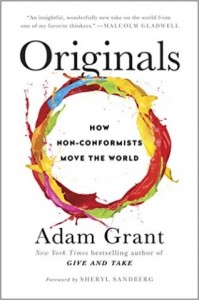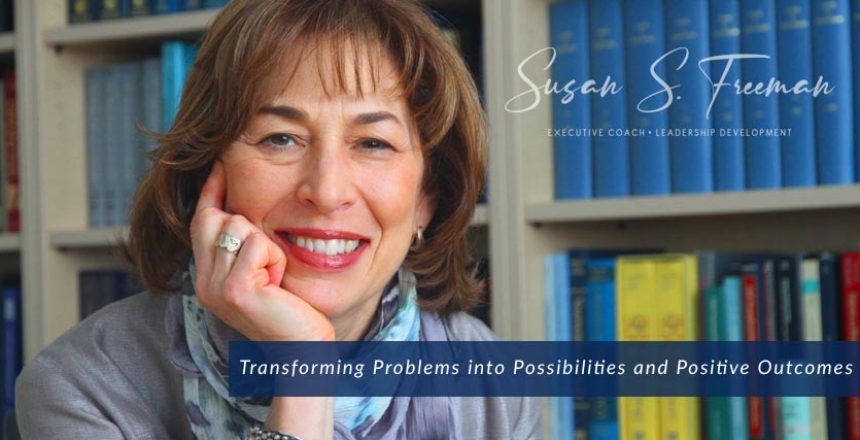 I’ve been thinking a lot about being innovative, creative and original. Fortunately, I’ve recently come across a book with a truly extraordinary perspective on the topic. For life-long learners in leadership, it should be placed near the top of your “must-read” list. The book is titled “Originals: How Non-Conformists Move the World” by Adam Grant.
I’ve been thinking a lot about being innovative, creative and original. Fortunately, I’ve recently come across a book with a truly extraordinary perspective on the topic. For life-long learners in leadership, it should be placed near the top of your “must-read” list. The book is titled “Originals: How Non-Conformists Move the World” by Adam Grant.
There is so much written about the topic, but I doubt if you’ll find anything more “original” than this book. As a social scientist, the author rigorously integrates research findings across multiple disciplines to make his point–that we are all capable of being a champion of something original—and he offers strategies that will develop those skills for leaders.
I could write multiple blogs on the fascinating examples from this book. Yet one stands out as being of particular interest to my readers:
One of the key things that stops us from being original is fear.
Managing it may require a different approach.
We are all inundated by so much stimulation; our brains are on constant hi-alert status reacting to everything in our world that we perceive as a “threat.” The common thinking is that when we are afraid, we should make our best attempt to “calm down.” In this book, Grant cites two research studies with college students that offer an opposing view.
- In one study, students were asked to give a speech on why they would make good collaborators at work (with only two minutes to prepare)! An experimenter sat in the audience, and all speeches were videotaped. Over 90% of professionals suggested that the students should manage fear by “trying to relax and calm down.” The research scientist asked them to speak three words out loud. She randomly assigned them to say either “I am calm” or “I am excited.”
 Turns out that that one word—calm versus excited-was sufficient to significantly alter the quality of their speeches.
Turns out that that one word—calm versus excited-was sufficient to significantly alter the quality of their speeches.
There was a 17% increase in persuasiveness and 15% increase in confidence among those students who branded themselves as calm. In addition the average length of their speeches increased by 29%. In another experiment where students were nervous before taking a tough math test, they scored 22% better if they were told “try to get excited” instead of “try to remain calm.”
- In another experiment, the researchers tasked the students with singing rock music in public. Their performances were scaled automatically by Nintento Wii in accuracy. They were assigned randomly to say “I am anxious” or I am excited.”
A control group who said nothing prior to performing had an average accuracy score of 69%. Labelling the emotion as anxiety reduced accuracy to 53%. However in the group who called it “excitement,” accuracy was 80%!
Why would this be? It turns out that there is simply too much momentum when we experience intense fear. “Trying to relax is like trying to slam on the brakes when a car is going 80 miles per hour.” The researchers think that it’s easier to convert fear into a different emotion—one that’s equally intense. This allows us to act in the face of fear by pressing a “go” switch instead of a “stop switch. By focusing on the reasons to move forward, that bit of excitement can enable us to take effective action in spite of the fear.
As a practitioner and teacher of conscious, mindful leadership, I am curious to try this out for myself and with clients. How those results might vary if the students had techniques to shift themselves into more presence, rather than reactivity.
What gets in the way of your being original?
I invite you to post your comments and stories here.
In the meantime, I hope you’ll learn some of my tips by downloading my free audio, “5 Secrets Every Effective Leader Should Know” here.

